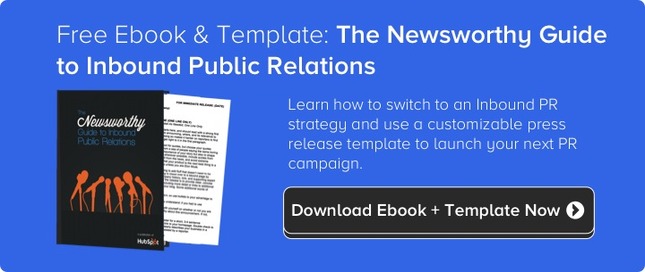 It pretty much goes without saying that most business interested in growing are interested in more press coverage.
It pretty much goes without saying that most business interested in growing are interested in more press coverage.
That desire itself does not present an issue — but the tactics that follow often do. You see, people often take the fact that they want press coverage to mean that they should stop at nothing to get it. This includes, but is not limited to, surprise visits, gag gifts, hostile pitches, and guerilla marketing (to name a few), which more often than not inspires rage instead of coverage.
To that end, a little over a year ago, we chronicled the top gripes journalists have with PR people. The response was staggering, so we decided to create an updated version of the deck that’s packed with new pet peeves. This year, however, journalists made it even easier on us: Most of the quotes and tips included in the deck were taken straight from the interwebs, specifically Twitter, where reporters are all too eager to share what’s working and what isn’t when it comes to media outreach.
Check out the SlideShare created by HubSpot’s Melissa Obleada and get some key takeaways below:
As you can see, some common themes emerged:
Playing Coy Doesn’t Work
Trying to get a journalist interested in a product she doesn’t know through a person she doesn’t recognize is hard enough as it is — don’t withhold critical information that could make or break the story. We heard from countless reporters who complained about “offers to send more information” that didn’t include any actual information about a product or app. Simply put, if you have truly interesting information, put it in the pitch itself. If you’re worried about length, you can assemble a Dropbox of relevant materials and include a link instead.
Whatever you do, don’t put the onus on the reporter to go through you to get through the interesting part of the story — lead with what will make the story compelling for him or her and make it as easy as possible for the reporter to learn more.
Make Follow-Ups Relevant and Meaningful
Last time we published pet peeves, many reporters expressed their unabashed hatred of the phone under any circumstances. I think the takeaway is about both the medium and the message: Know your audience, know their preferences, and make your follow-ups relevant and meaningful. For example, if a reporter has just tweeted how she prefers to be approached by phone (like Kelli Grant of CNBC did here), pay attention and act accordingly.
Reporters are almost always on deadline or a time crunch, so don’t waste their time — be explicit about what you’re calling about and on whose behalf, and be clear about why you are following up. If an exclusive is about to pass them by, let them know that and give them a new reason to reconsider it. If you have new information to add, spit it out, and show a bias for action. Be clear, concise, and action-oriented: Reporters will thank you for it.
Leave Rinse and Repeat for Your Laundry
If a reporter just wrote a story about your industry, the chances he wants to write the exact same story again (but featuring your company prominently, of course) is virtually zero. Similarly, if one of an anchor’s colleagues just did an in-depth feature on your company, chances are he or she won’t take kindly to being pitched an almost identical story. That’s not to say you shouldn’t use relevant news events to drive coverage, just keep in mind that you’re one of a thousand other people doing the same thing, so make sure you stick out from the pack with your originality, unique angle, and/or expertise.
Finally, remember that even on the best days of their jobs, reporters can’t play man-to-man (or woman-to-woman) defense; it’s zone coverage all day, every day given the ratio of PR folks to journalists. Given that, the inboxes and Twitter streams of most producers, editors, and bloggers alike is often a battlefield for attention and interest. Instead of just piling on with your pitch, choose quality over quantity, and invest the time and energy to do your homework and tailor your approach to the reporter’s interests, beat, and outlet.
Are reporters perfect? Certainly not. Anyone who has worked for any length of time in communications can share their gripes of repetitive stories, botched embargos, and lazy reporting. But when journalists are so proactive about sharing their pet peeves, the least we can do is pay attention: Knowing the potholes other people have waded in to can help shape your strategy and approach, or at the very least give you a few good laughs.
What gripes did we miss? Let us know in the comments — we’ve love to hear from you.
![]()






